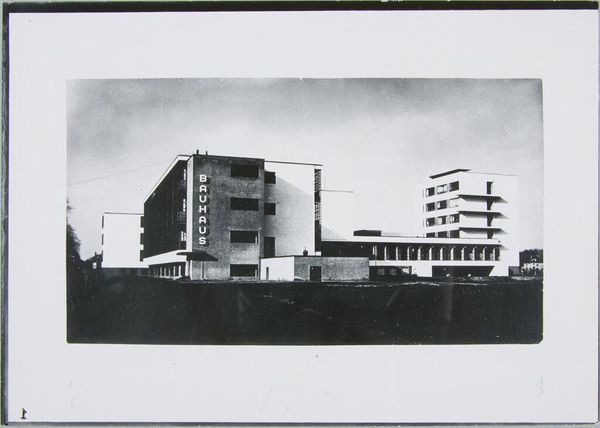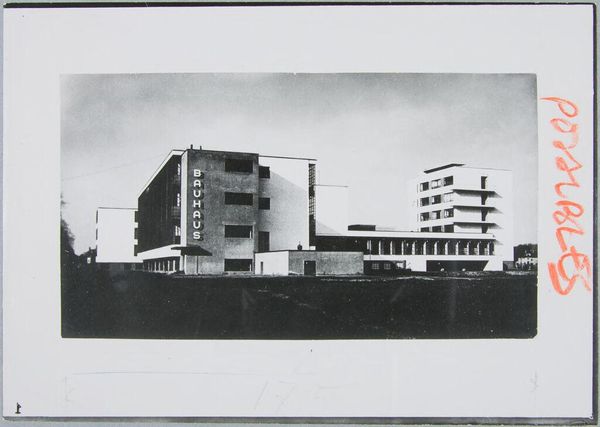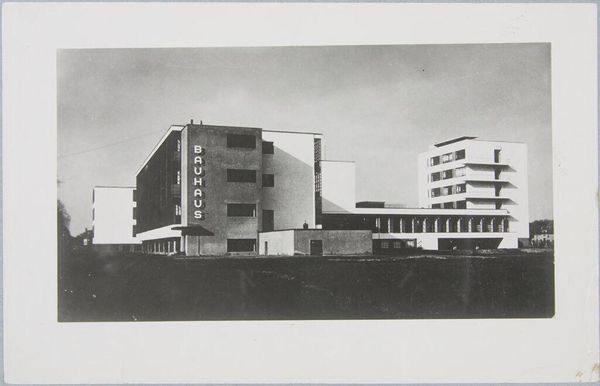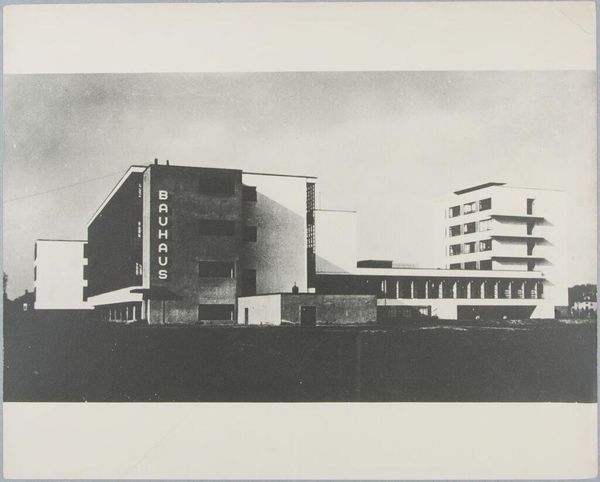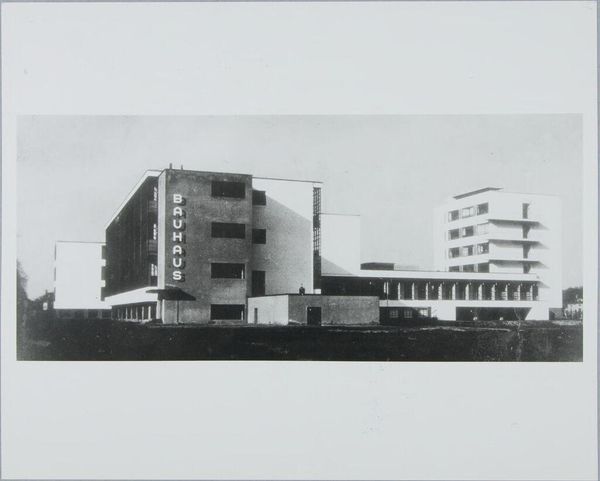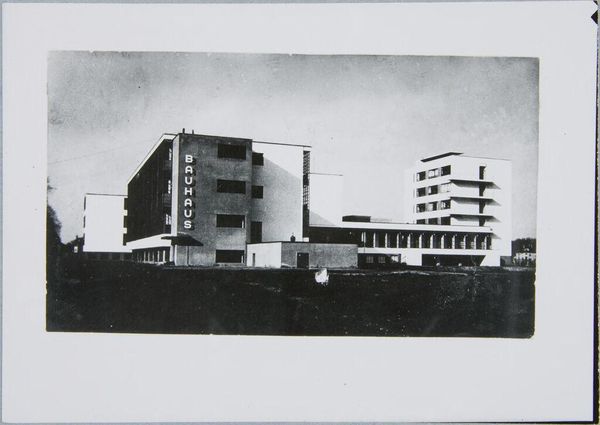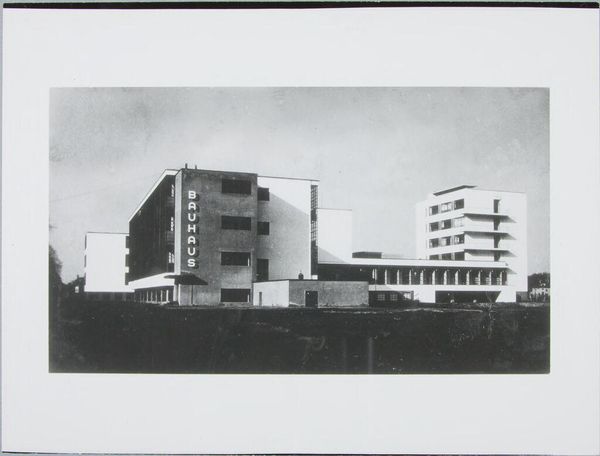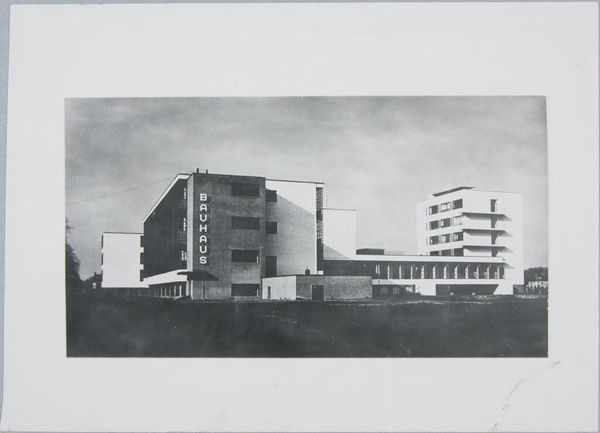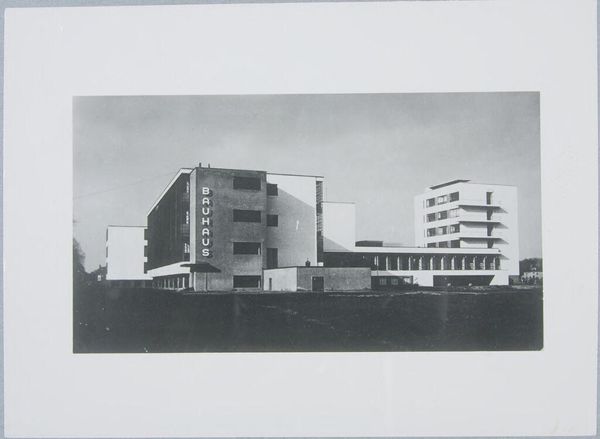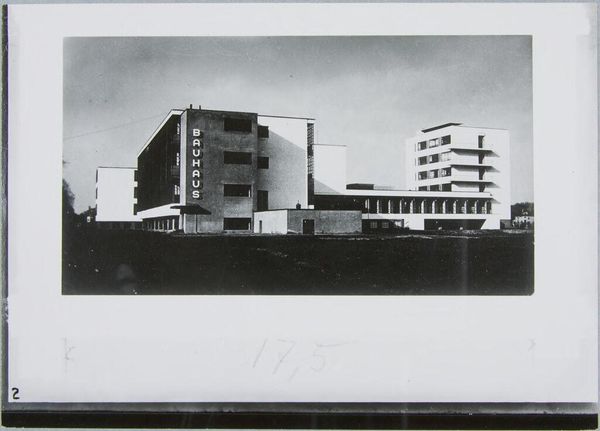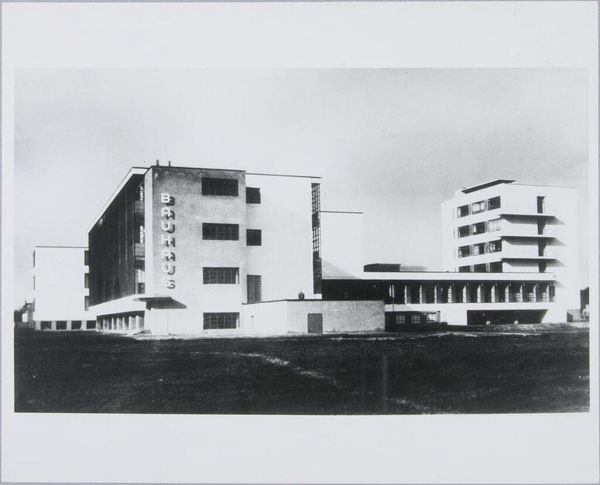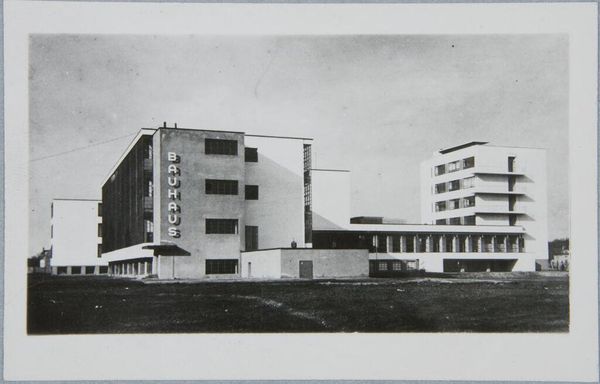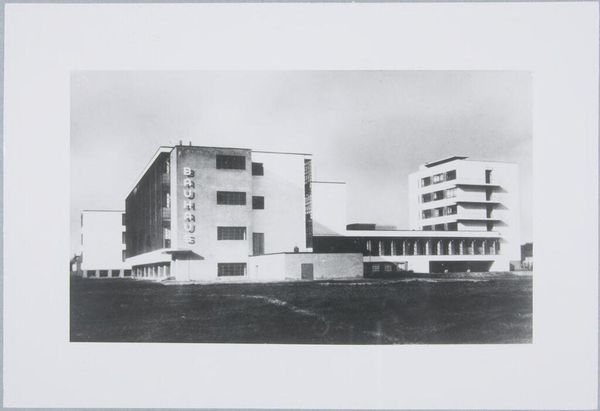
Bauhaus Building, Dessau, 1925-1926: View from southwest after 1926
0:00
0:00
Copyright: CC0 1.0
Editor: This is Klaus Hertig’s photograph of the Bauhaus Building in Dessau, taken between 1925 and 1926. I’m struck by the clean lines and the geometric shapes, but also the lack of ornamentation. What’s significant about this building historically? Curator: This image encapsulates the Bauhaus ethos of merging art, craft, and technology. Consider the social context: post-World War I Germany, a moment of immense social upheaval. The Bauhaus emerged as a radical experiment, aiming to create functional designs for everyone, breaking down class barriers. How does the stark, almost utopian aesthetic resonate with that historical moment for you? Editor: I see it now. It's less about beauty and more about a functional and egalitarian future. The unadorned facade is a rejection of the past. Curator: Precisely. And the building itself became a symbol, a physical manifesto of the Bauhaus ideals. It was later targeted as degenerate art, embodying the tensions between artistic expression and political power. Editor: It’s incredible how a building can embody so much more than just its physical structure. Thanks for that context. Curator: Indeed. Art always speaks to something bigger, reflecting the society that creates it.
Comments
No comments
Be the first to comment and join the conversation on the ultimate creative platform.
